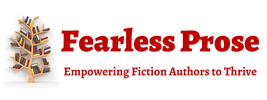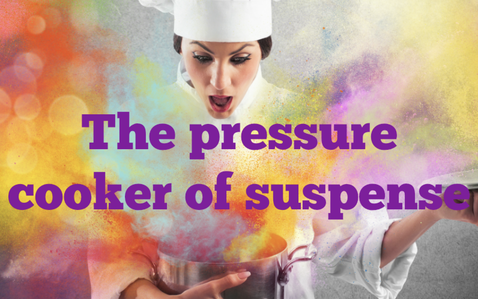|
Author: Sandy Vaile I may write romantic-suspense, but firmly believe that suspense is for every story, no matter the genre. It’s the ideal tool to compel readers to keep turning pages all the way to the end, by creating real emotional tension. What is suspense? Remember back to a book you just couldn’t put down. More than likely, the author made you worry about the character, and be apprehensive about the outcome of conflicts. You might have had clammy palms, a racing heart, fidgeted, or literally sat at on the edge of your seat, desperate to know what happened next. All of things are signs that the author applied suspense techniques, not just to engage you, but to throw you in the pot and seal the lid so you can feel every last ounce of emotional turmoil. The real trick is to maintain a level of uncertainty throughout the story, so the reader worries about the outcome and is left pleasantly spent by the end. How does it apply to all genres? The level of suspense you find in different genres does vary, as does the way information is revealed, but the suspense techniques still apply. For example, in a Cosy Mystery the suspense will be more temperate than in a thriller. You are likely to use the relationship angst to create uncertainty, instead of the threat of imminent harm from a crazed predator or solving an enigma rather than expecting something scary to jump out of the nearest shadow. A Young Adult story may be less graphic than an adult Paranormal, both in the way intimacy and violence is portrayed, but suspense will help to make both impossible to put down. The scenarios at the heart of each story, the locations and types of characters that populate them, will depend on the norms of each genre. How much do I need? It’s important to ensure you identify opportunities to increase suspense, and fully explore them, to make the most of existing tension, and squeeze every bit of emotional value from your characters. Signs that you may need to increase the suspense in your story, are if you get feedback saying your story lacked a hook, is slow in places, or just didn’t grab/engage the reader. Angela Ackerman and Becca Puglisi say: If a critique partner voices confusion over the emotional reaction of one of your characters, check to make sure the stimulus trigger is prominent. In other words, make sure the character is behaving in a believable way, with realistic motivations. How can you create suspense? Authors use a range of techniques to create uncertainty for their characters, and apprehension for their readers, but it’s important to remember that creating suspense isn’t necessarily about putting your characters in physical danger. It’s about engaging the reader, making them care about your character’s journey, and then giving them good reason why their goals might not be fulfilled. Leave them wanting more, right up until the Happily Ever After. Create an engaging character You can do this by giving your character something they care deeply about, and then threatening to take it away, but in a romantic story none of that will matter if the reader isn’t fully engaged with the character first. You need to create a character the reader cares about. I’m not going to focus too much on emotional engagement here, but it involves creating a character the reader can identify/sympathise with, that has believable motivations, and actively pursues their goals. Raise the stakes The character’s goal must be important enough to have dire consequences, e.g. they don’t just want a lot of money to buy a shiny new car, but they need it to pay for their dying sister’s medical treatment. Make it clear early on what the consequences of failure are for your character (or at least what they believe them to be at the beginning of the story). Then throw increasingly difficult situations at them, which in turn diminishes the likelihood of them succeeding. Leave your character no other option than to face her greatest emotional fear by the climax. Giving your character a deadline to get something done is also a great way to heighten anxiety levels. You want to put them under enough pressure to expose what they’re really made of. Raise questions Hook the reader in by raising questions that make them curious, about what’s going to happen next, what might have happened in the past, and what course of action the protagonist or antagonist will take next. One way to do this, is to show the reader things that the characters don’t know. Another is to leave them hanging mid action or mid decision at the end of a chapter. Raise doubts By raising doubts about how the character is going to get out of this sticky situation, or win the love of her life, you make the reader apprehensive. Do this over and over throughout the course of the story, and they’ll reach nail-biting anxiety. That’s what suspense is all about! Use techniques like putting the character:
Alexandra Sokoloff is brilliant at having her protagonist and antagonist come so close to crossing paths as the detective follows the serial-killer’s trail of destruction, that the reader is in a constant state of panic, because disaster seems imminent over and over again. Leave a trail of breadcrumbs Clues aren’t just for crime stories. There are all sorts of clues and hints you can scatter along the way to build the reader’s expectations. They might be obvious, or subtle, in which case the reader realises their significance once the climax is reached. I liken clues to a trail of breadcrumbs, because they are sprinkled in here and there in small pieces. Some of those breadcrumbs might foreshadow what’s going to happen, and others might selectively withhold information. Done properly, the reader will have just enough foresight to build their expectations of trouble/failure/ danger. Language choice Be aware of your word choices when building suspense. Choose a word that supports the tone of the scene, and stick to straightforward words in the midst of action. Sentence length is a great way to show urgency, but even though you may use more short sentences during action scenes and longer ones during retrospection, still vary them enough to avoid monotony. Prolong the outcome As Nicholas Sparks said: Nothing that’s worthwhile is ever easy. If your character figured out the best course of action and achieved their goal easily, it would be a short and hassle-free story, and totally kill any tension. In order to build the suspense, you should hint at what could go wrong and draw-out the angst for as long as reasonably possible. The suspense lies in between promising something awful and it actually happening, so make the most of it.
A romantic example of this, is creating sexual tension. Reading about a couple tearing one another’s clothes off and getting hot and steamy might be a lot of fun, but it’s the way the author draws out those longing looks and tantalizing touches that lead up to the sex, which creates eager anticipation. You can still build lulls of retrospection and small wins into the story. This provides the reader a chance to catch her breath, and is a great opportunity to anchor them in your character’s motivations and expectations, ready for the next onslaught of drama. Remember, it’s not the outcome that creates suspense, but the uncertainty of the journey. I hope I have inspired you to tease out every last morsel of suspense in your story. If you’d like to chat in-depth about this topic or get some personalised feedback about adding suspense to your story, then grab a place in my next The Pressure Cooker of Suspense course.
0 Comments
Your comment will be posted after it is approved.
Leave a Reply. |
Fearless ProseEmpowering aspiring authors to confidently write novels they're proud to publish Categories
All
Archives
May 2024
|
© Sandy Vaile 2012-2024 |
Contact and Privacy Policy - About Sandy |




 RSS Feed
RSS Feed